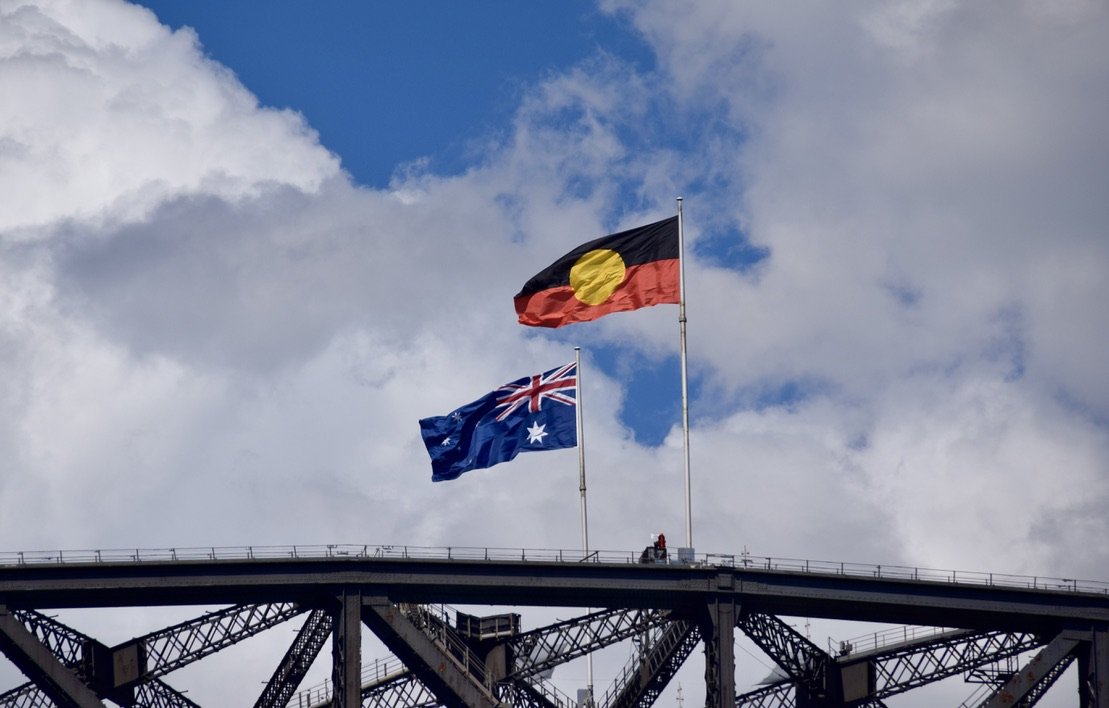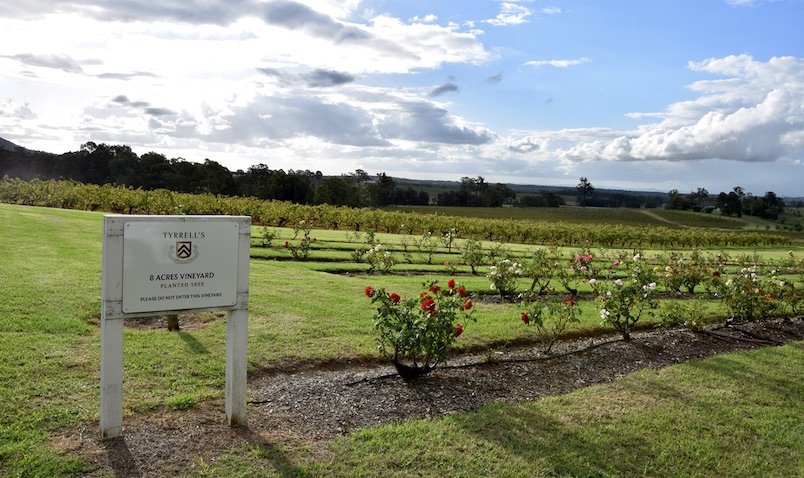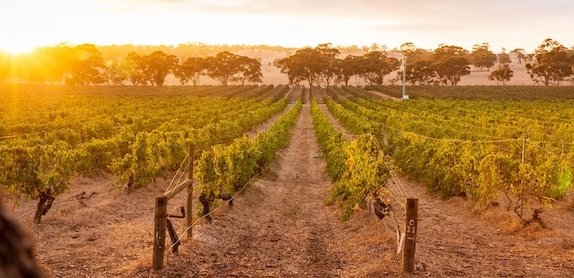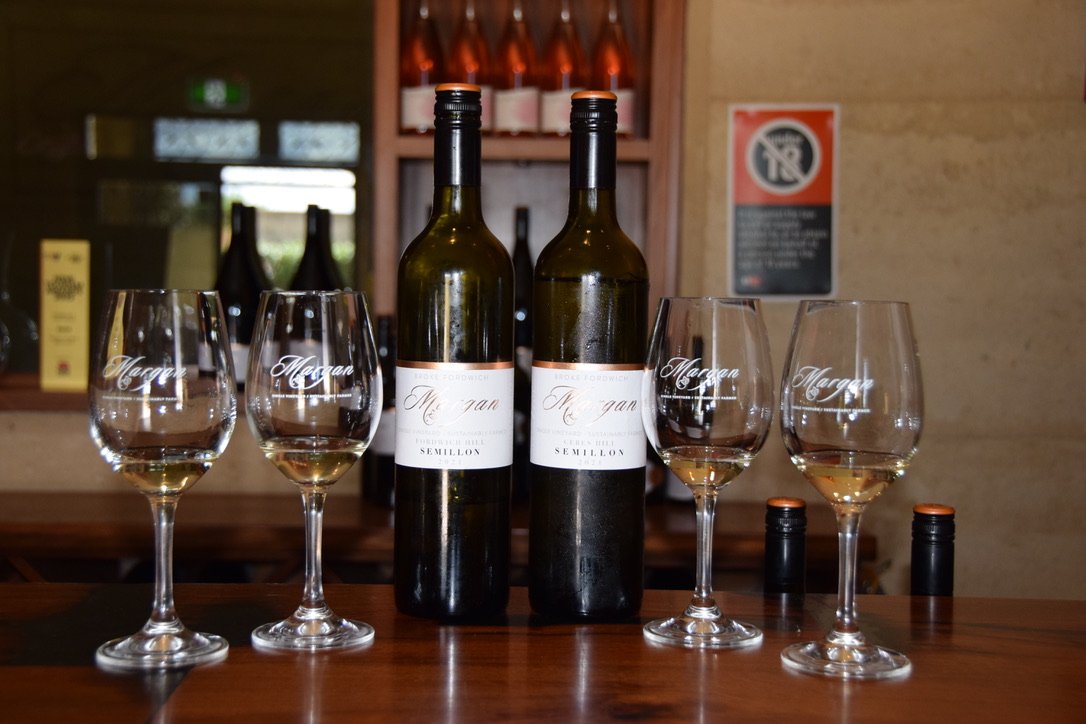WINE TOURISM IN AUSTRALIA

Sydney, New South Wales, Australia
Photo source: Winekeller
Select an Australian wine region for your next wine tour:

Some background to the ‘land down under’, Australia
Australia is the smallest continent on Earth, but one of the largest countries, lying between the Pacific and Indian oceans in the Southern Hemisphere. It really is a vast and globally quite isolated country. The Australian mainland stretches from west to east for some 4000 km and about 70% of the landmass of the whole of Europe would fit into it. This helps to explain the unique flora and fauna here as well as the independent, pragmatic spirit of its people.
Despite this relative geographic isolation, Australia has good trading links with Europe and the Americas and has in more recent years, developed strong trading links with Asia. In 2019, pre-pandemic, almost 10 million international visitors came to Australia.
Australia is often referred to as the ‘Oldest Continent’ as well as the ‘Last Frontier’, referring to it being the last continent (apart from Antartica) to be explored by Europeans. However before the First Fleet arrived at Botany Bay in 1788, the indigenous Aboriginal people had lived here for thousands of years.
Much of Australia is extremely hot and dry and therefore much of the population is based around the coastal cities. This applies also to the wine industry and the growing of grapes, which is restricted to areas where the sun is less fierce and there is adequate supply of water.
An introduction to the Australian wine regions
Australia is proud of its rich wine heritage, spanning over 2 centuries. It offers highly distinguished vineyards, home to some of the oldest vines existing today and generations of families dedicated to developing and innovating the wine industry here.
Australian vineyards cover some 150,000 hectares and the country produces approximately 12 million hectares of wine per annum, making it the 7th largest wine producing country.
Australia exports approximately 60% of its production today, but the export market is more challenging than it once was. After soaring exports in the 1990s and early 2000s, mainly in the value, large-volume sector, the Australian market has struggled due to a variety of factors. These include difficult weather conditions and water supply issues, but also the world falling out of love with the high alcohol, heavily-oaked Chardonnay and Shiraz wines, for which Australia was mainly known. This has made it challenging for Australia to shift its reputation towards regionally specific mid-range and fine wines using a broader set of grape varieties.

Tyrrell’s vineyards, Hunter Valley - home to some of the oldest vines in the world
Source: Winekeller
What are the wine regions in Australia?
Today there are 65 distinct wine growing regions across Australia, involving approximately 2000 wineries and 6000 grapegrowers. Winemaking and grape growing are quite distinct commercial entities in Australia, with most wine producers buying in most of their grapes and trucking them in huge refrigerated trucks across the country. This makes the Australian wine industry different, certainly from European wine countries, where most grapegrowers are winemakers, using their own grapes.
Australian wine regions map - source: Wine Folly
The best Australian wine regions - and the most well known
Most of Australia's vines grow where summers are cooler - in Southern Australia. More than 40% of vines grow in the state of South Australia, a quarter in Victoria and most of the rest in New South Wales. However, a number of the country’s finest wines are also grown in the south-western corner of Western Australia. Other regions include Tasmania in the far south and Queensland on the east coast.
Notably, a high proportion of Australia's vines are farmed, intensively, in the heavily irrigated vineyards of the dry interior. These regions include Riverland, Murray Darling and Riverina and their grapes are used for high volume, lower value, bulk wines.
The most well known and best Australian wine regions include the following:
-

South Australia
South Australia is the largest wine region. Barossa Valley is South Australia’s most prestigious region and home to some of the oldest living vineyards in the world. Two other famous regions, Clare Valley and Eden Valley, produce some of the best Rieslings in Australia and then there is McLaren Vale, which rivals Barossa Valley for producing world-class wine.
-

Victoria
Victoria is home to more wine regions, unique climates and innovative wineries than any other state in Australia. Yarra Valley is perhaps the most well known - just an hour's drive west of Melbourne. The cool and wet climate makes it a prime area for producing wine, particularly Pinot noir, Chardonnay, and Cabernet sauvignon.
-

New South Wales
New South Wales is the birthplace of Australian wine. A three-hour drive north of Sydney, Hunter Valley in New South Wales is Australia’s oldest wine region and certainly one of its most famous. It’s home to more than 150 cellar doors and is known for producing Shiraz, Cabernet sauvignon, and Chardonnay, as well as one of Australia’s classic wines, Semillon.
-

Western Australia
Western Australia has earned a reputation as being a producer of premium wine. About a three-hour drive from Perth, Margaret River produces over 20 percent of Australia’s premium wine. Situated along the coast, its Mediterranean climate provides perfect growing conditions for wine grapes. Cabernet sauvignon and Chardonnay are the king and queen here.
Australian wines and Australian grapes
In the 1990s and early 2000s, intense concentrated wines made from Shiraz, Grenache and red blends dominated the Australian wine story, as well as big, oaky Chardonnays. However the picture has been changing over recent years.
Australia grows up to 100 different varieties, but there are 6 Australian grape varieties you need to be aware of! These include:
Australian red wines:
Shiraz: Australia’s most popular wine and grows in almost every wine region. Barossa Valley and McLaren Vale are home to some of the oldest Shiraz vines in the world
Cabernet sauvignon: Australia is home to what are believed to be the oldest Cabernet vines in the world, and today it’s the third most planted variety, after Shiraz and Chardonnay
Pinot Noir: Growing in popularity, Pinot noir is a sensitive vine and hard to grow, preferring cooler climate regions like Tasmania, Adelaide Hills and Mornington Peninsula.
Australian white wines:
Chardonnay: Australia’s most planted white variety. There are 3 main styles: unoaked (fresh and vibrant), oaked (full-flavoured and creamy) and sparkling. The demand for the oaked, heavy Chardonnays of the 1990s has now been replaced by a more elegant style
Riesling: Australia is now one of the world’s top Riesling producers. It grows in vineyards across the country and the best wines tend to come from cooler-climate regions like the Clare Valley, Eden Valley, Great Southern and Tasmania
Semillon: One of Australia’s most unique wines. Fresh, light and citrusy, young Semillon pairs beautifully with food. Unlike most white wines, some Australian Semillons also have the potential to age gracefully for years and even decades
Semillon in the Hunter Valley (Margan Wines)
Riesling grapes
Penfolds Shiraz - an iconic Australian wine
Other Australian grape varieties
Plantings of Pinot gris/grigio, Viognier and Sauvignon blanc have all increased in recent years as they become more popular, while Italian and Iberian varieties, mainly Sangiovese, Nebbiolo and Tempranillo, are proving successful on a much smaller scale.
Big Australian wine brands
The Australian wine industry is dominated by a few large companies, which have certainly succeeded in putting Australia on the world wine map - including Accolade Wines (Hardy’s, Banrock Station), Treasury Wine Estates (Lindeman’s, Wolf Blass, Penfolds, Rosemount Estate, Wynns Coonawarra Estate), Pernod Ricard (Jacob’s Creek) and Casella Wines (Yellow Tail).

Spectacular Uluru
Source: Tourism Australia
Visiting Australia - Australia Travel Guide
If you plan to travel to Australia, it’s likely - and very sensible considering the journey time and jet lag - you will be looking to stay longer than you would normally spend on holiday and you plan to do much more than discover the Australian wine regions!
Australia is such a vast country, there is so much to see, do and experience you will likely be looking to plan an Australian wine tour, focusing on a certain region and combining it with seeing the sights and major cities.
Planning your trip:
To get the most from your trip, you will need to put a lot of thought into planning - see here for lots of tips and useful information to help you on your way.
When to go:
The Australian Summer is December-February, but there’s never a bad time to go to Australia. There are 4 distinct seasons, but they tend to be different depending on where you go! So check out the seasons here and make sure you are fully informed and prepared!
Where to go - combining wine and destinations
So, as the wine regions are mostly in Southern Australia and Western Australia, here are some options for you:
Combine the wine regions of Western Australia with a visit to Perth, the Coral Coast, superb beaches and Fremantle
Spend time in Sydney, with its iconic attractions, harbour, gardens and beaches and explore the vineyards of New South Wales, which are just a couple of ours away (nothing for Australia!) - also enjoy the Blue Mountains and the stunning New South Wales coastline!
Enjoy the beaches, botanic gardens and boutiques of beautiful Adelaide, as well as the amazing nature on beautiful Kangaroo Island, whilst exploring all of the nearby top Australian wine regions of South Australia
Explore Melbourne - a lively and trendy city, great for culture, food, shopping and entertainment - and of course cricket! Make time to enjoy the stunning coastline and of course, check out the Victoria wine regions, especially Yarra Valley.
Visiting the Sunshine State of Queensland is high on most people’s list, it’s got the beaches of the Gold Coast, the amazing Great Barrier Reef, beautiful Brisbane. There’s not too much wine here - however high in the mountains you can visit the Granite Belt - one of Australia's most exciting high altitude, cool climate wine regions!
For more information and inspiration visit Australia.com
The beautiful Blue Mountains
The Great Barrier Reef (Tourism & events Queensland)
Melbourne Skyline






